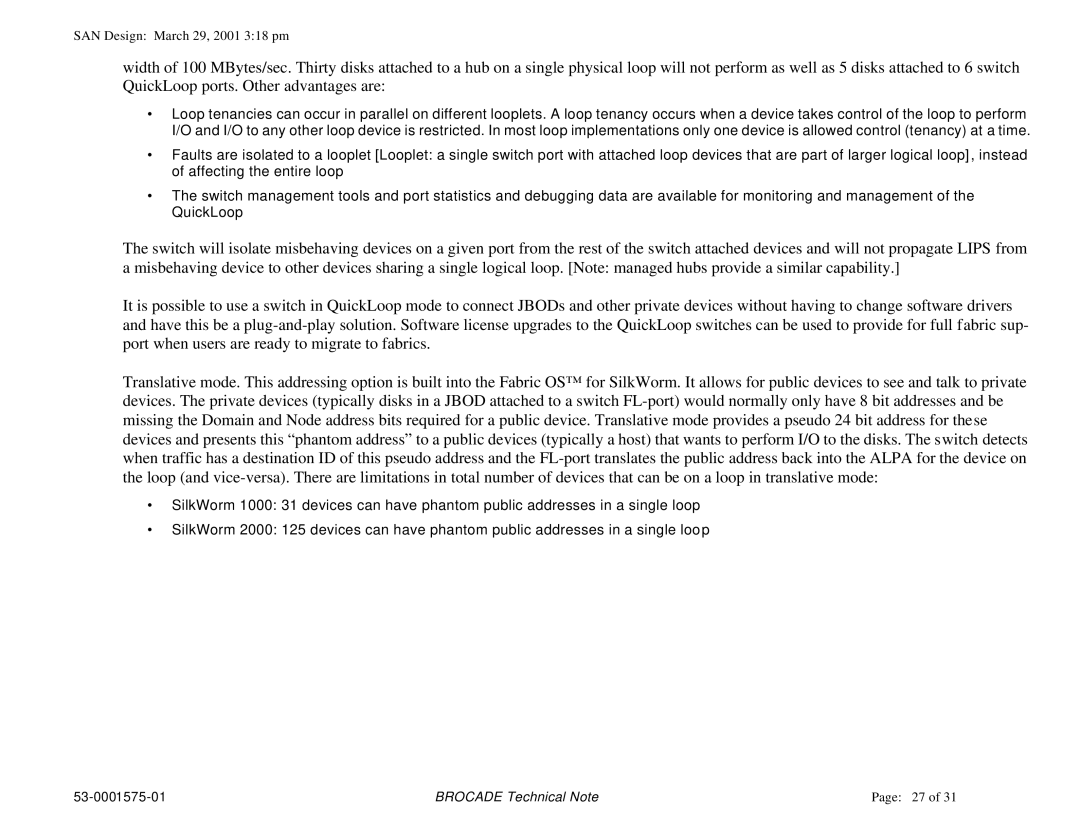SAN Design: March 29, 2001 3:18 pm
width of 100 MBytes/sec. Thirty disks attached to a hub on a single physical loop will not perform as well as 5 disks attached to 6 switch QuickLoop ports. Other advantages are:
•Loop tenancies can occur in parallel on different looplets. A loop tenancy occurs when a device takes control of the loop to perform I/O and I/O to any other loop device is restricted. In most loop implementations only one device is allowed control (tenancy) at a time.
•Faults are isolated to a looplet [Looplet: a single switch port with attached loop devices that are part of larger logical loop], instead of affecting the entire loop
•The switch management tools and port statistics and debugging data are available for monitoring and management of the QuickLoop
The switch will isolate misbehaving devices on a given port from the rest of the switch attached devices and will not propagate LIPS from a misbehaving device to other devices sharing a single logical loop. [Note: managed hubs provide a similar capability.]
It is possible to use a switch in QuickLoop mode to connect JBODs and other private devices without having to change software drivers and have this be a
Translative mode. This addressing option is built into the Fabric OS™ for SilkWorm. It allows for public devices to see and talk to private devices. The private devices (typically disks in a JBOD attached to a switch
•SilkWorm 1000: 31 devices can have phantom public addresses in a single loop
•SilkWorm 2000: 125 devices can have phantom public addresses in a single loop
BROCADE Technical Note | Page: 27 of 31 |
